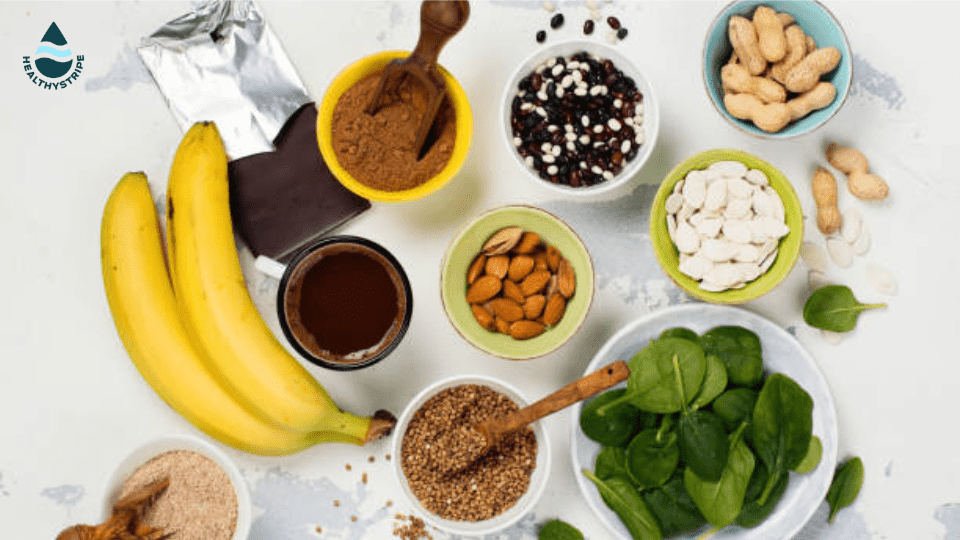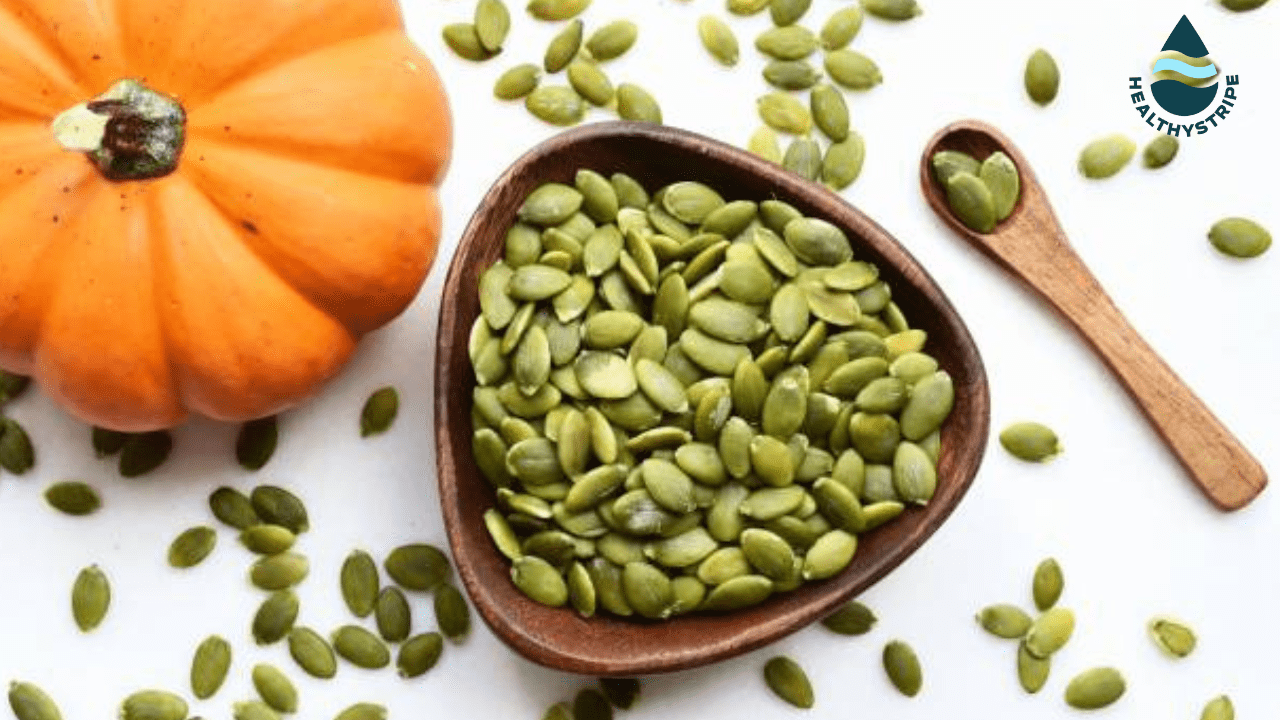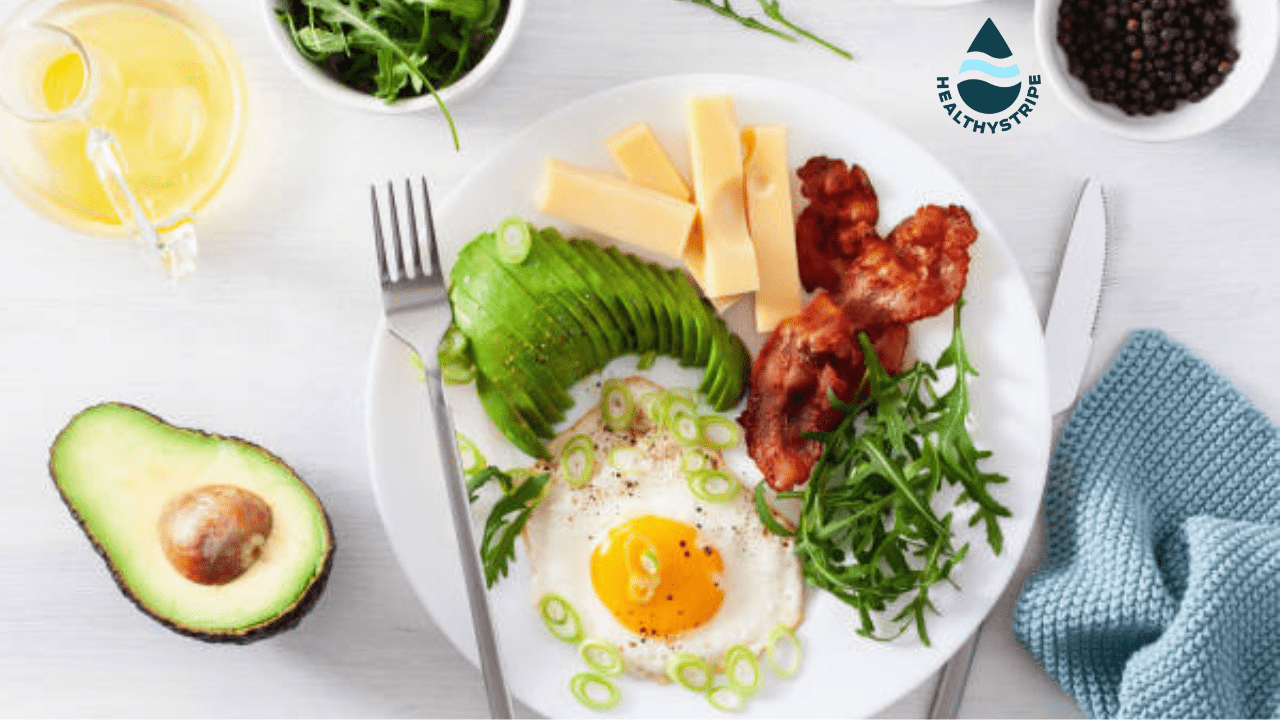
Magnesium is an essential nutrient that plays numerous physiological functions in your body. In the modern era, most people prefer fast foods which lack essential minerals like magnesium. It is critical to explore natural sources of magnesium to overcome this problem.
Most people think magnesium is a minor nutrient but don’t know its vital role in maintaining a healthy body and immune system. It provides a calming effect on your brain and boosts your mental functioning and ability to concentrate. It is usually found in nutrient-rich foods.
According to old research statistics, 15-20% of the population in developed countries has magnesium deficiency. National health and nutrition survey in 2006 demonstrated that 36.3% of Mexican females and 31% of Mexican males had low serum magnesium levels. This data emphasizes the need to add magnesium-rich foods to your daily diet. This blog details the top natural magnesium sources, the benefits of eating magnesium, how to get more magnesium in your diet, and how much magnesium you can consume.
Let’s break the mold!
[lwptoc title=”Table of Contents”]
12 Natural Sources of Magnesium:
Magnesium is critical for the physiological functions of the body, DNA and RNA synthesis, insulin sensitivity, blood glucose regulation, energy formation, and bone health. It is essential to add magnesium-rich foods to your diet to maintain adequate levels of magnesium in the body. The following are a few natural sources of magnesium:
1- Dark Green Vegetables:
Dark green leafy vegetables like spinach, collard greens, mustard greens, kale, turnip, and Swiss chard are not only rich in vital nutrients, but they are also rich in magnesium. You can add them to smoothies, salads, and cooked meals to boost your body’s magnesium levels.
100 grams of spinach can provide 87 mg of magnesium and 136 mg of calcium. It is also rich in vitamins A, C, K, and iron. As they as rich in dietary fibers, they have a laxative effect and help in relieving constipation.
2-Seeds and Nuts:
Cashews, almonds, and pumpkin seeds are rich sources of magnesium. A handful of almonds is a convenient way of adding magnesium to your body. You can add almond butter to your breakfast to boost its taste as well as your magnesium intake.
1 oz or 28g of cashew nuts can provide 83 mg of magnesium (making 20% of DV). Brazil nuts are a rich source of selenium and magnesium.
Nuts maintain sugar and cholesterol levels in your body. These are particularly helpful for diabetics. Moreover, seeds and nuts have an anti-inflammatory action on cardiovascular health and lower cholesterol levels in the body. Additionally, they can reduce appetite when taken as a snack.
3- Grains:
Whole foods such as barley, buckwheat, quinoa, and brown rice do not only contain dietary fibers, but they are also natural sources of magnesium. Quinoa contains proteins and magnesium. You can use it as a salad or a side dish. Brown rice provides a sustainable source of energy and dietary fibers in combination with magnesium.
A cup (168 grams) of roasted and cooked buckwheat groats can provide 85.7 mg of magnesium. The addition of whole grains into your diet can be helpful in the maintenance of the body’s physiological functions.
4-Seafood:
Seafood, including salmon, tuna, and mackerel, are magnesium-rich, complemented by a dose of omega-3 fatty acids. If you’re a seafood enthusiast, these are a great delight for you to add magnesium to your body. Mackerel provides approximately 76 mg of magnesium per 100 grams. Moreover, sardines, tuna, and anchovies are also rich in magnesium. Top fish and shellfish, including caviar and black and red granular, provide 300 mg of magnesium per 100g serving. The RDA for magnesium is 400 mg per day. It indicates that sea foods can provide 75% of the magnesium needed for the body.
5-Pulses:
Cereals and pulses like black beans, oatmeals, soybean, lentils, kinako, bran flakes, and chickpeas are magnesium-rich and protein-packed. Black beans are a good source of plant-based proteins and magnesium. You can add them to soups, salads, or stews to make a nutritious and flavorful dish.
A cup of cooked black beans (173 mg serving) provides 120 mg of magnesium or 29% of DV. Legumes have a low glycemic index and high fiber content. They can be used as a snack for diabetics to control their blood sugar levels.
6-Bananas:
Banana is energy-packed fruit and a stellar magnesium source. It is not only rich in magnesium but also provides potassium to support heart health and lower blood pressure.
Bananas contain a high level of carbohydrates and sugars, and it is not suitable for diabetics and people aiming to take a low carbs diet.
One cup of mashed banana (250 grams) contains 60.8 mg of magnesium. You can use bananas in smoothies and milkshakes to boost your body’s magnesium and potassium levels.
7-Dark Chocolates:
Dark chocolates are a great delight for chocolate lovers and those with a sweet tooth. This flavourful snack contains magnesium, manganese, iron, and copper. Dark chocolates contain flavonoids which possess antioxidant properties and protect the body against the harmful effects of free radicals. Prebiotic fibers in dark chocolates can help grow beneficial gut bacteria.
Additionally, Antioxidant properties improve cardiovascular health and lower bad cholesterol levels (LDL) in the body.
A 100 grams of dark chocolate provides 228 mg of magnesium, 1 oz provides 34.6 mg, and a bar of chocolate (101 g) provides 230 mg of magnesium.
8-Tofu:
Tofu is a plant-based protein that also contributes to your magnesium intake. It is also a rich source of calcium, iron, and vitamin A.
The United States Department of Agriculture states that 100 grams of raw tofu prepared with calcium sulfate contains 30 mg of magnesium.
9-Avocado:
Avocado is a creamy and nutritious fruit that serves as a dual source of essential nutrients i.e., healthy fats and magnesium. It also contains healthy monounsaturated fats, vitamins (vitamin K and vitamin B), and potassium.
When taken as a snack, it provides a feeling of satiety and reduces your hunger. It helps maintain cholesterol levels and reduces inflammation.
A cup of avocado cubes (150 g serving) contains 43.5 mg of magnesium. You can add this nutrient-packed fruit as a snack to fulfill your body’s magnesium requirements.
10- Potatoes:
Potatoes are easily accessible, cheaper, and a good source of magnesium. They are also rich in starch. When baked with the skin on, they serve as a good magnesium source. You can take potatoes in boiled form, add them to salads and smoothies, and also in fried form.
According to Food data central, 100 grams of potatoes contain 23 mg of magnesium. A half cup of potatoes (diced) contains 17.2 mg of magnesium.
11- Dairy Alternatives:
Yogurt and kefir, besides calcium, are notable magnesium sources. Yogurt contains probiotics that complement its magnesium content. It helps with the growth of gut bacteria and keeps your intestines healthy. Opting for unsweetened, plain yogurt avoids excess sugars and adds maximum nutritional value to your diet.
A cup (245 grams of 8 FL oz) of plain, low-fat, and unsweetened yogurt contains 41 mg of magnesium and 649 kJ of energy.
12- Figs:
Sweet and packed with nutrients, figs are a noteworthy magnesium source. Figs, both fresh and dried, bring a blend of sweetness and nutrition to the table. Their magnesium content, coupled with dietary fiber, makes them a superb snack or breakfast addition.
According to the United States Department of Agriculture, 100 grams of raw figs can provide 17 mg of magnesium.
The Benefits of Eating Magnesium-Rich Foods:
Magnesium plays a critical role in energy generation, nerve functions, muscle actions, formation and release of neurotransmitters, and maintenance of bone mineral density. Some of its key benefits are:
1- Cardiovascular Health:
Magnesium regulates heart rhythms and transports other electrolytes like potassium and calcium to generate membrane potential and control heart contractions. It stays in the powerhouse of the cell called mitochondria to generate energy.
Moreover, magnesium diminishes heart-related risks. It regulates the tone of vessels and reduces the risk of calcification, formation of atherosclerotic plaques, and thrombosis.
A deficiency of magnesium can lead to coronary artery disease, heart failure, and arrhythmias. Additionally, good serum magnesium levels decrease the risk of stroke.
2-Bone Strength:
Magnesium is essential for the maintenance of bone mineral density. People who take adequate levels of magnesium have a higher bone mineral density compared to those who are deficient. It plays a role in the absorption of calcium and its regulation. People with gut problems, type 2 diabetes, celiac disease, and Crohn’s disease are at a greater risk of developing magnesium deficiency.
Approximately 60% of body magnesium is stored in the bones. It is essential for bone cells i.e., osteoblasts (bone-forming cells) and osteoclasts (cells that degrade the bones). It acts as a coenzyme for many reactions, including the synthesis of nucleic acids, proteins, and lipids. Besides this, magnesium prevents osteoporosis and other bone disorders.
3- Mental Wellness:
Magnesium intake can alleviate symptoms of depression and anxiety. It provides a calming effect on your brain and relieves stress. It is an essential nutrient in the formation and release of neurotransmitters.
In the brain, it blocks NMDA (N-methyl D-aspartate) receptors to prevent anxiety. According to a research study, magnesium plays a vital role in nerve transmission, myelination of neurons, formation, and maintenance of synapses, and regulation of cholinergic and dopaminergic neurotransmitters. Moreover, it enhances learning ability, concentration, and long and short-term memory.
4- Blood Sugar Balance:
It’s crucial in modulating and maintaining blood sugar, especially for those with diabetes. It acts as a coenzyme in glycolysis and regulates insulin action.
A low level of serum magnesium results in low tyrosine kinase activity, which impairs insulin action and develops insulin resistance in the body. Magnesium taurate is the best form of magnesium that manages glucose levels in the blood. An adequate level of magnesium enhances insulin sensitivity.
How to Get More Magnesium in Your Diet?
While there are many ways to get more magnesium, adding natural sources of magnesium into your daily diet is the most convenient. The following are a few tips to get more magnesium in your diet:
1- Take a variety of food:
Add a variety of the foods listed above into your diet to get all essential nutrients.
2- Home-cooked Delights:
You can opt for home-cooked foods to get a maximum level of magnesium. You can take the above-mentioned natural sources of magnesium in the form of salads, smoothies, and shakes to enhance their taste.
3- Minimize Processed Intake:
Processed foods are usually deficient in magnesium and other essential nutrients. Try to avoid such foods to stay healthy and prefer nutrient-rich and magnesium-dense food.
Also Read: Does Magnesium Makes You Sleepy?
How much magnesium should you consume?
The recommended daily allowance (RDA) of magnesium is the following:
Men: 400-420mg
Women: 310-320 mg
Expecting Mothers: 350-360mg
If you have an underlying disease like gut problems, these values may vary. For individualized guidance, you can consult with a dietitian or healthcare professional. Magnesium supplements can also be helpful in restoring magnesium levels in the body.
Bottom Line:
Magnesium is a micronutrient but essential for your health and optimal functioning of your body. By making informed food choices, you can ensure an optimal magnesium intake and maintain optimal magnesium levels, enriching your health in multiple dimensions. Opt for natural sources of food as mentioned above, to get maximum magnesium in your daily diet. Magnesium deficiency can cause multiple problems, like bone disorders, heart failure, and electrolyte imbalance. In case of severe deficiency, always consult a dietitian.
Frequently Asked Questions:
How can I raise my magnesium levels quickly?
What are the Drinks high in magnesium and potassium?
Drinks like almond milk, green tea, coconut water, banana shakes and smoothies, peanut butter shake, spinach smoothies, rosehip juice, pumpkin seed milk, beetroot juice, and carrot juice are high in magnesium. Banana shake is rich in potassium and magnesium.
How to increase magnesium levels?
You can increase your body’s magnesium levels by taking nutrient-rich and magnesium-dense foods. Natural sources of magnesium like green leafy vegetables, pulses, cereals, and fruits can increase your body’s levels. In case of severe magnesium deficiency, magnesium supplements can help, but they shouldn’t be taken without a doctor’s prescription.
What fruit is highest in magnesium?
Fruits like avocado, banana, blackberries, kiwi, cherries, strawberry, papaya, orange, and raspberry contain magnesium. Avocados, bananas, and figs stand out as magnesium-rich fruits, among others. You can take these fruits in a raw form or add them to shakes and smoothies for a better taste.









